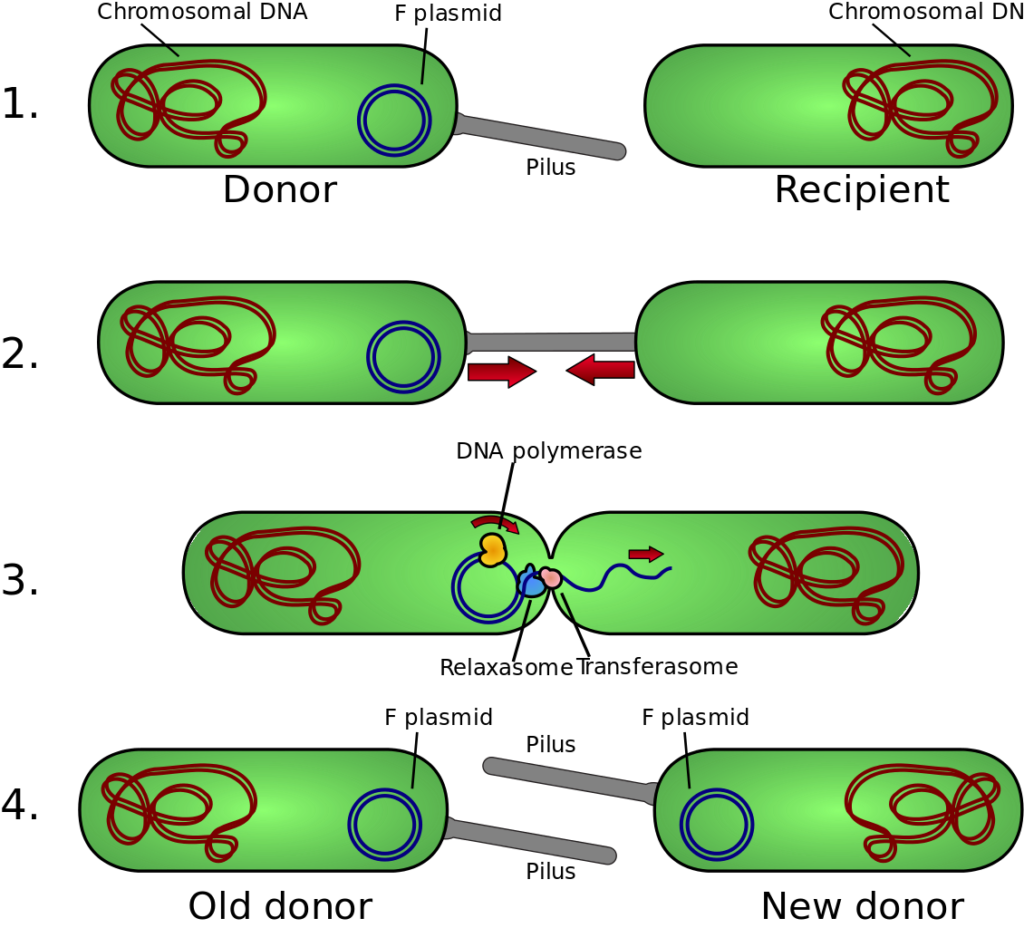
Bacterial Genetics (Pathology)
Bacterial genetics can teach us about how bacteria function, cause disease and spread. But they are also the source of the tools we use to understand and manipulate biology. The session is in four parts - Genomes Replication and mobile DNA Gene Expression Manipulating Genomes
-
What is genetics?
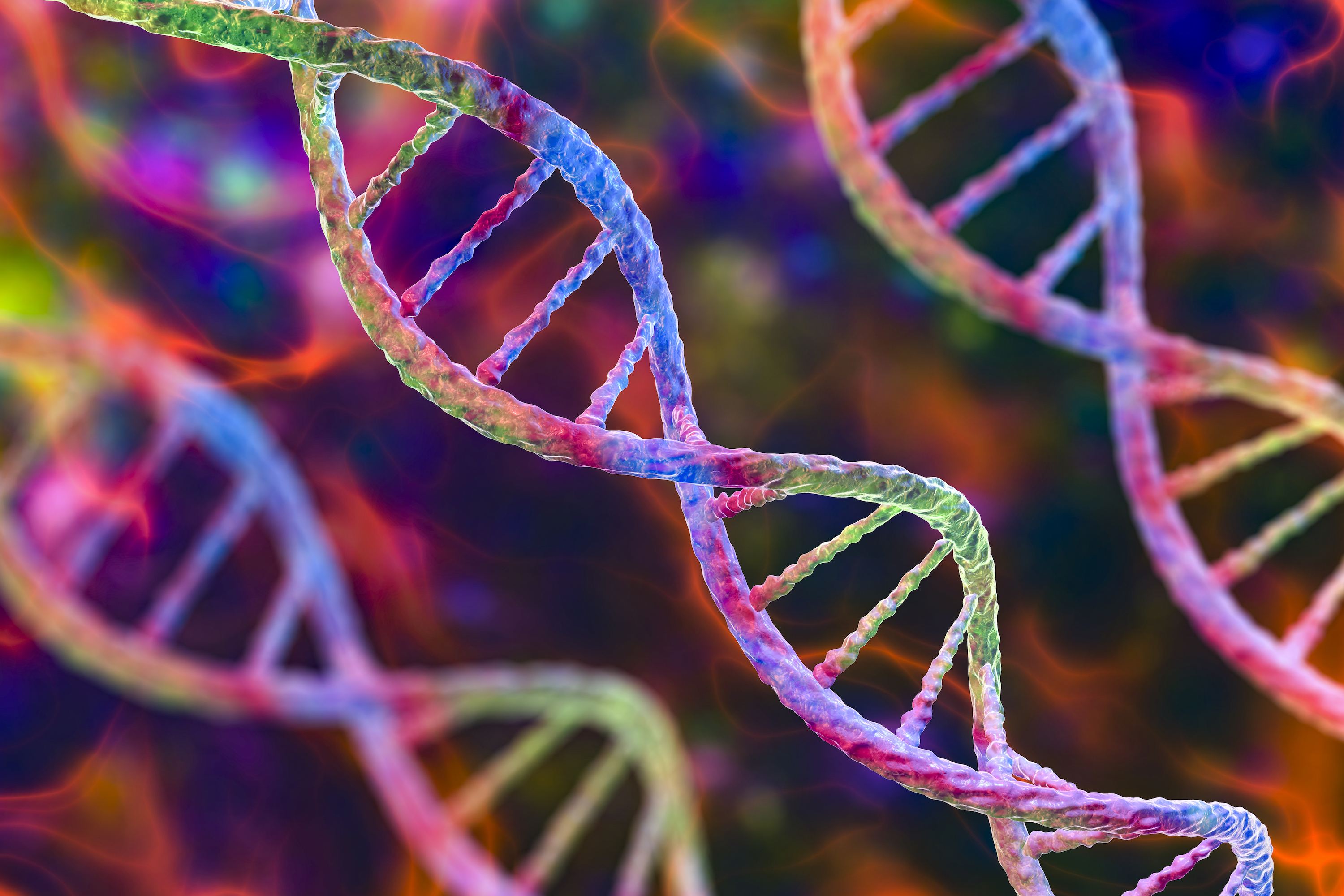
The study of genomes and DNA/RNA, genome replication, gene expression, genetic variation and distribution
-
What does the bacterial genome include?
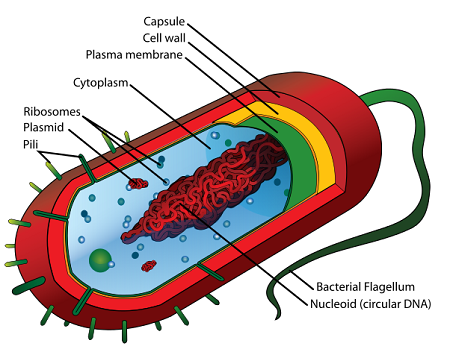
-Chromosome (single copy, circular, essential for life)
- Mobile genetic elements (MGE), such as:
- Plasmids (autonomously replicating circular DNA)
- The prophage (viruses integrated into the chromosome)
-
What are the 2 definitions of a gene?
1)A unit of heredity located on a specific region of the DNA molecule
2)Genes are involved in the production of a particular product through its expression
-
From a whole genome sequence, we can predict cell function. We identify patterns and homology to known genes and motifs; Can you name some examples? (5)
- Putative genes encoding proteins with predicted functions (eg. toxins, virulence factors, metabolic pathways)
- Gene regions with predicted functional regions (eg. Transmembrane region, ATP binding region)
- Start and stop regions for those genes
- Regions where gene regulators and RNA polymerase bind
- Integrated mobile genetic elements
-
Many __________ 'genes' have no known or predicted function
What is the missing word?
Putative
-
What are Single Nucleotide Polymorphisms, commonly known as SNPs (pronounced "snips")?
Variations at a single position in a DNA sequence among individuals within a population, involves the substitution of a single nucleotide (A, T, C, or G) for another in the DNA sequence
-
What does WGS stand for?
Whole Genome Sequencing
-
What can WGS reveal?
The evolutionary history of a species and how it is spreading
-
The HA-MRSA CC22 close has caused what % of MRSA in the UK?
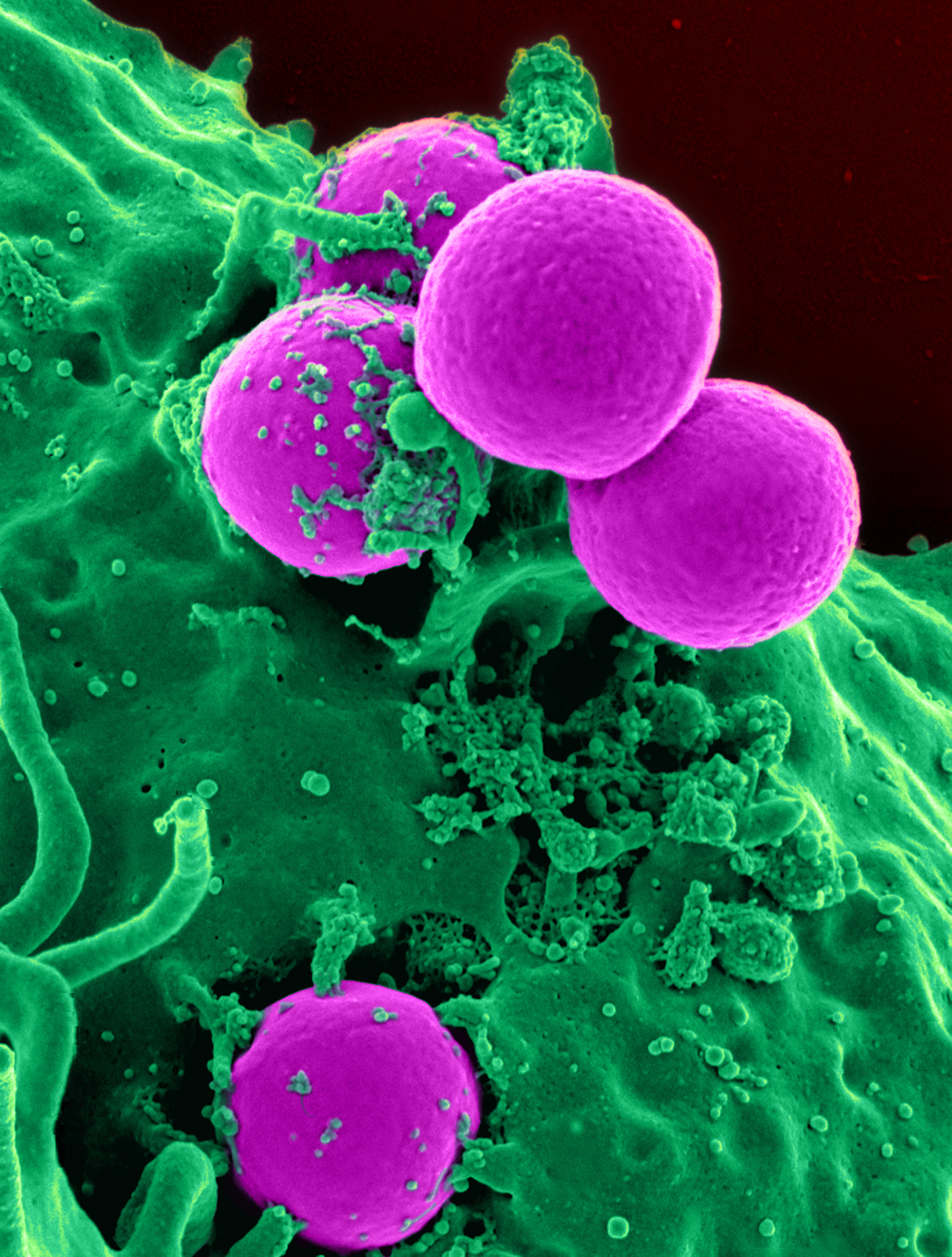
75%
-
Where and when did HA-MRSA CC22 originate?
The UK Midlands in 1986
-
What are Mobile Genetic Elements (MGEs)?
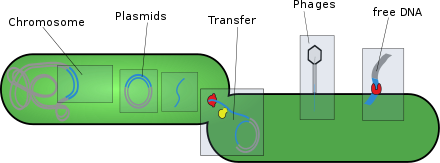
-Are DNA segments that have the ability to move or transpose within a genome
-These elements can change their location and copy number within the genome
-
Why are MGEs important? (5)
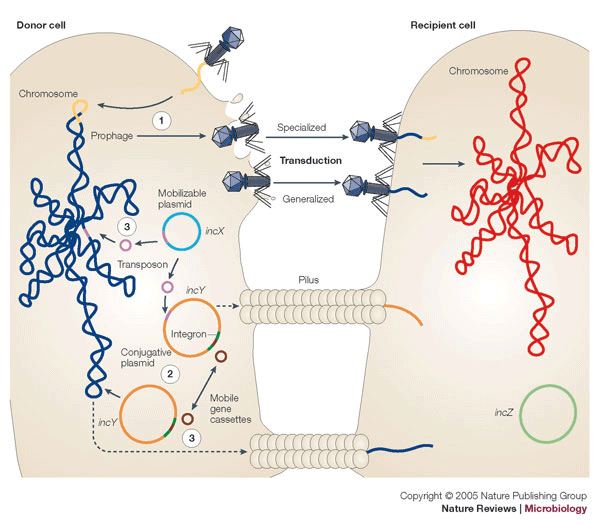
Genetic Diversity
Evolutionary Innovation
Genomic Plasticity
Bacterial Pathogenesis
Research Tools
-
Where are MGEs found?
In various organisms, including bacteria, archaea, and eukaryotes
-
What are the three different ways in how MGEs can move between bacteria?

1)Bacterial transformation
2)Bacterial transduction
3)Bacterial conjugation
-
Are plasmids a type of MGE?
Yes
-
What are plasmids?
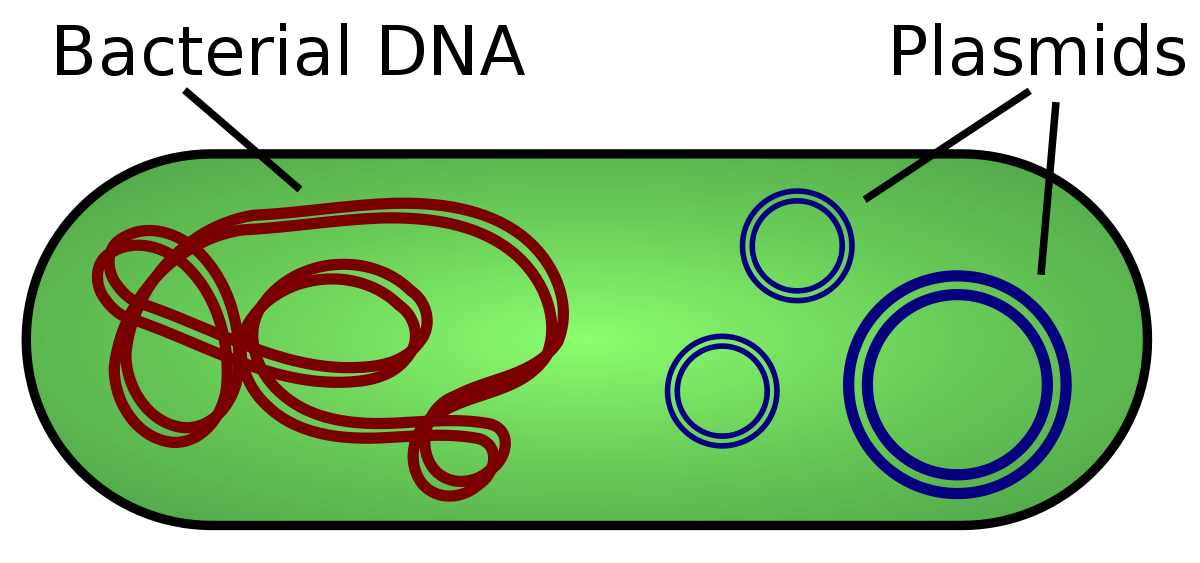
Autonomously replicating circular DNA
-
How large is a plasmid?
2 kb - 100 kb
-
Is the presence of plasmids essential for the host bacteria?
No
-
How are antimicrobial resistance genes often carried to offspring?
Via plasmids
-
What is the prophage?
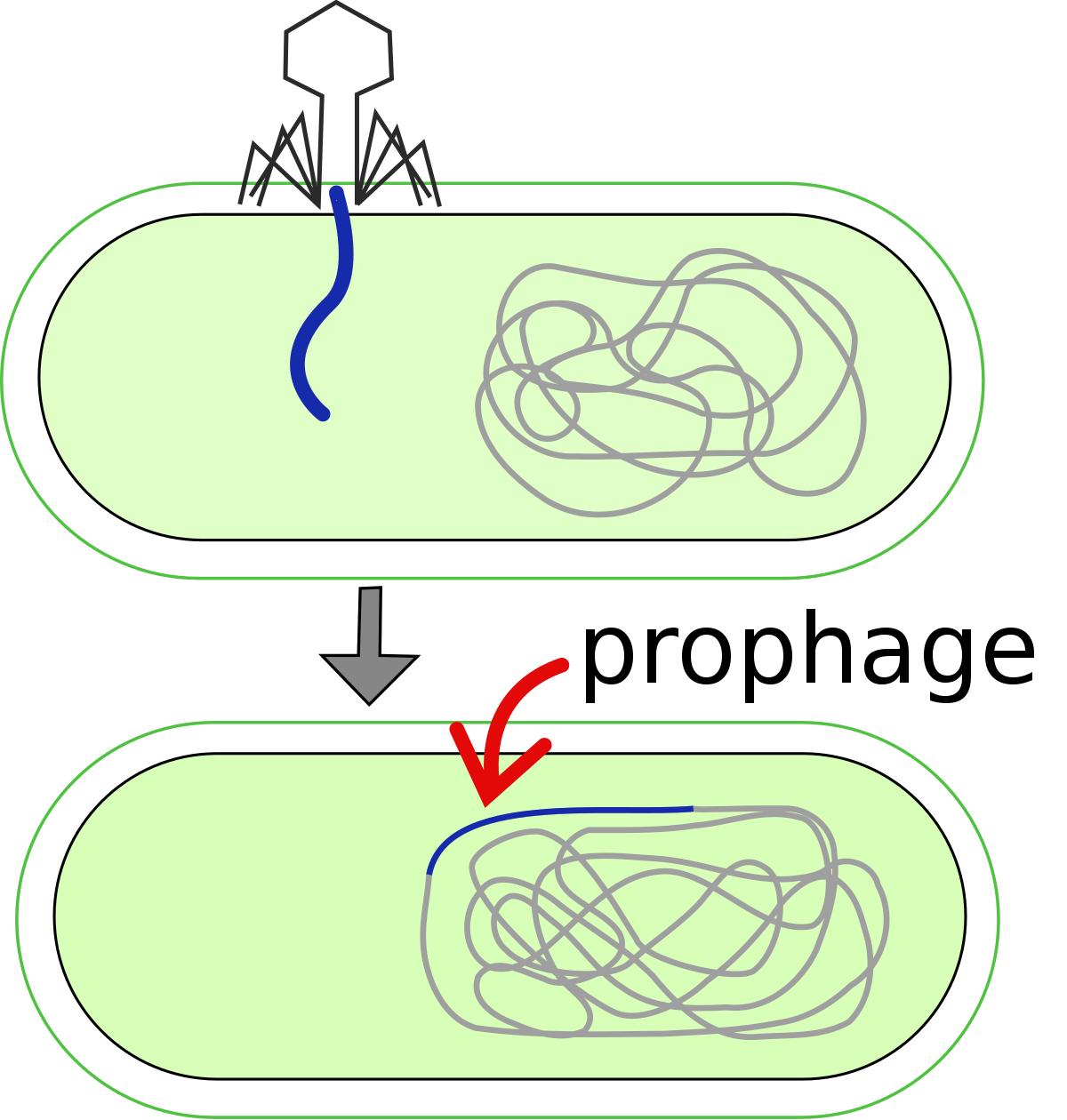
A prophage is the DNA from a bacteriophage that has integrated its genetic material into the DNA of a bacterial host
-
What is the bacteriophage?
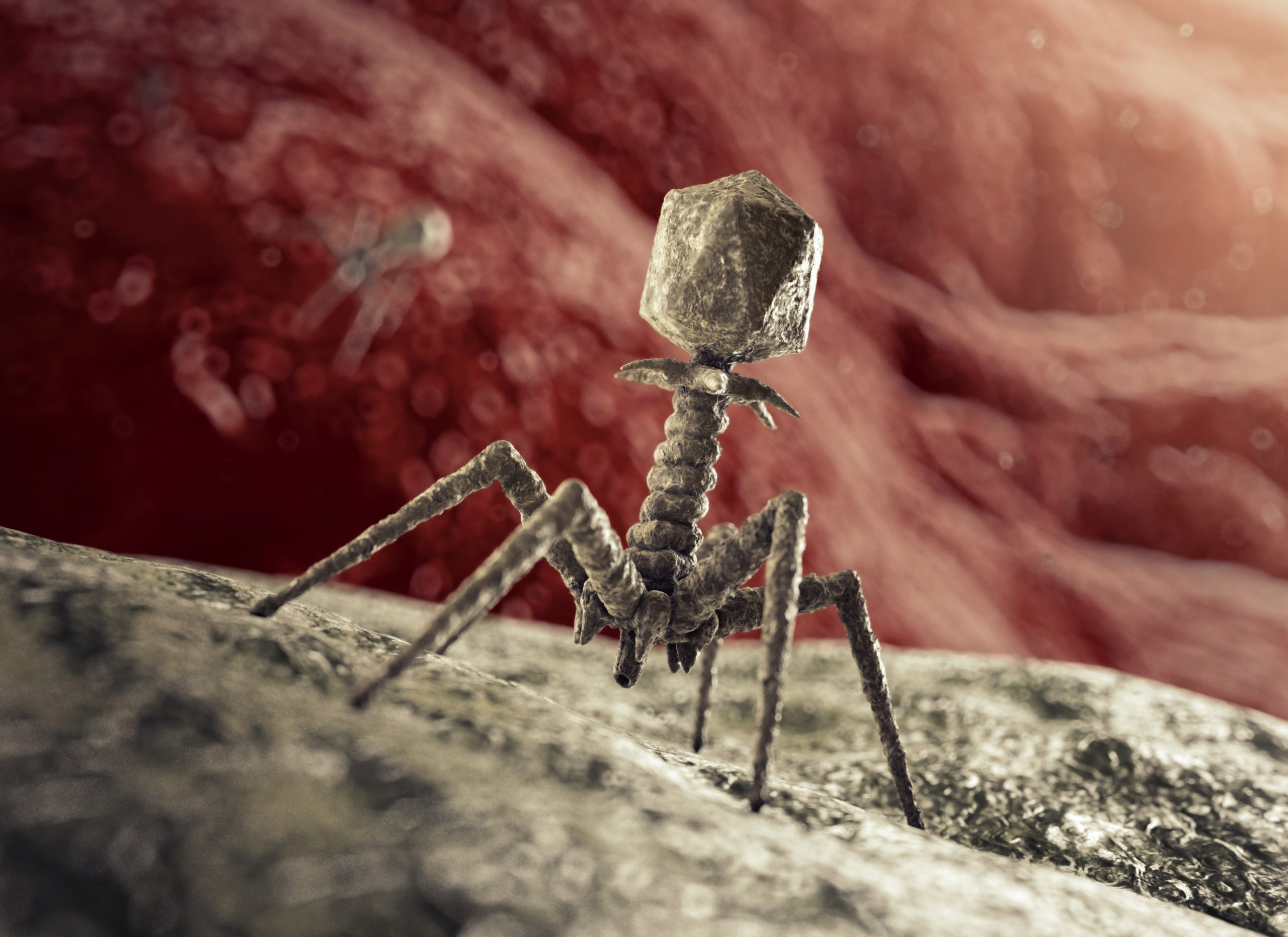
Is a type of virus that infects and replicates within bacteria
-
A bacteriophage can either....?
Can lyse and kill bacteria OR have its genome sit in the bacterial chromosome (prophage)
-
The prophage can encode important virulence genes
What does virulence mean?
It is a measure of the severity of the disease that the microorganism can cause in an infected host (pathogenicity)
-
What is generalised transduction?
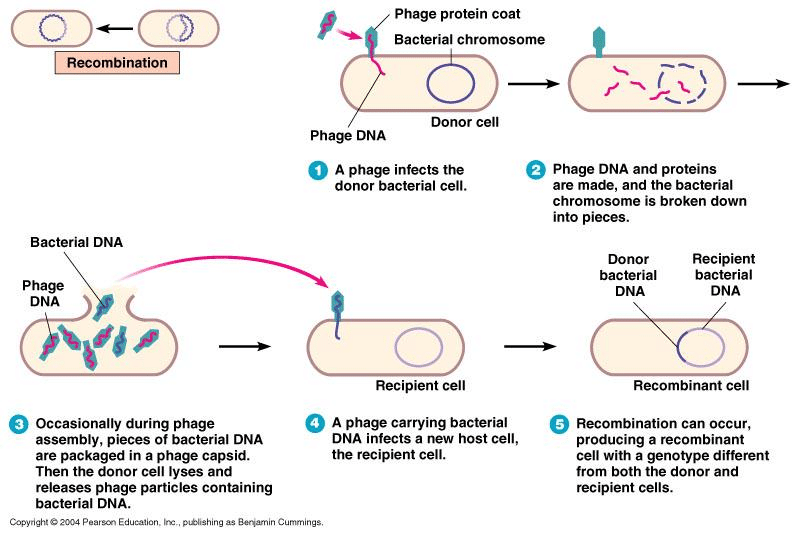
When a temperate bacteriophage (can undergo either a lytic or lysogenic cycle) ‘accidentally’ (random) packages host bacterial DNA or plasmids into phage particles and delivers it to new bacteria
-
Can all DNA transfer into any bacteria?
No
-
Bacteria can protect themselves from foreign DNA as it might be harmful
State an example:
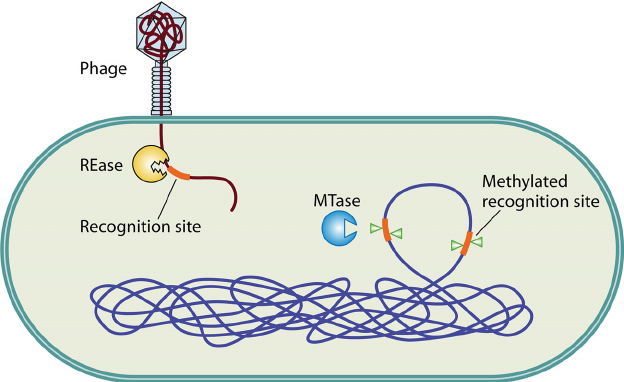
Restriction Modification (RM) - consist of a modification enzyme that epigenetically methylates a specific DNA sequence, and a restriction endonuclease (restriction enzyme) that cuts DNA lacking this epigenetic mark. A specificity subunit will target a specific palindrome, eg. CGATCG
-
What is a classic example of gene regulation by a repressor protein?
The lac operon
-
Many bacterial virulence factors are expressed in vivo or vitro?
In vivo
-
Which genes are expressed in vivo?
Genes important for survival and virulence are expressed
-
What are the three different regions of the plasmid?
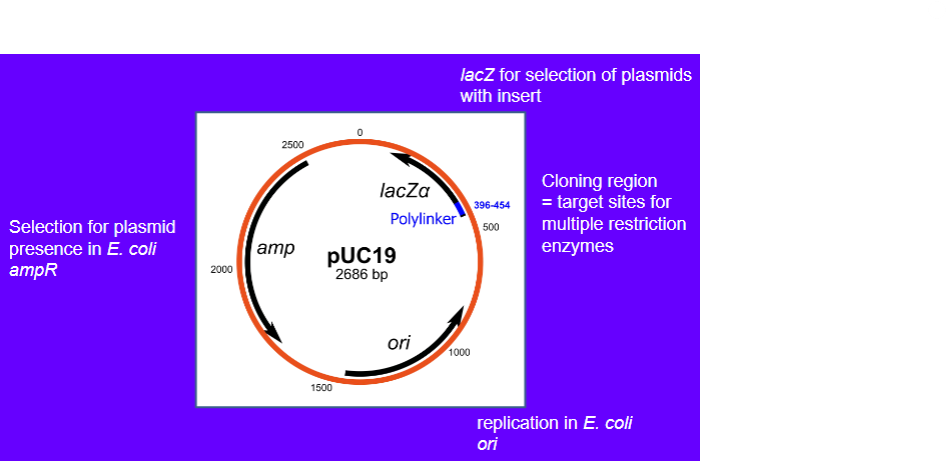
-Gene (such as amp in e.coli)
-Origin of replication region
-Cloning region (containing lacZ genes)
-
Outline the steps in how you would clone a gene using a plasmid vector: (Steps 1-4)
Isolate the Gene of Interest:
Extract and purify the DNA containing the gene of interest
Select a Plasmid Vector:
Choose a suitable plasmid vector based on size, replication properties, and any specific features required for downstream applications
Digest the Plasmid and Gene DNA:
Use restriction enzymes to cut both the plasmid vector and the gene of interest. This creates compatible ends for ligation
Ligate Gene into Plasmid Vector:
Use DNA ligase to join the cut ends of the plasmid and gene, creating a recombinant DNA molecule.
-
Outline the steps in how you would clone a gene using a plasmid vector: (Steps 5-8, start with transformation)
Transform Bacterial Cells:
Introduce recombinant plasmid into bacterial cells through transformation
Select for Transformed Cells:
Culture the transformed bacteria on agar plates containing an antibiotic that the plasmid carries a resistance gene for. This ensures only cells with the plasmid survive
Identify Positive Clones:
Screen for bacterial colonies that contain the gene of interest in using methods like PCR or restriction enzyme digestion
Amplify and Extract Plasmid DNA:
Culture and amplify the positive clones, then extract and purify the plasmid DNA
-
What is X-gal?
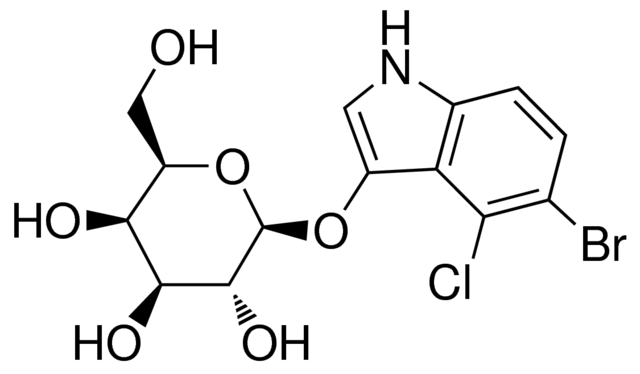
A sugar that is added to the agar
-
Why is X-gal used?
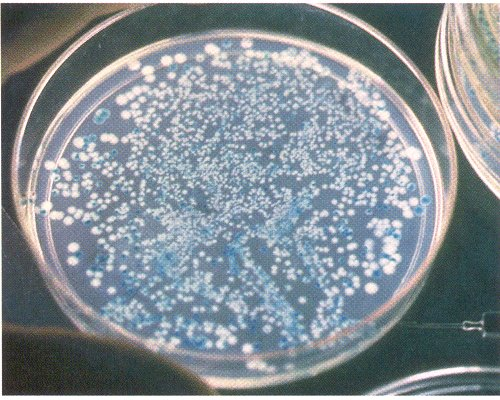
If the bacteria carry an intact lacZ gene, the lacZ protein will break down the X-gal and turn the colonies blue, therefore helps to identify successful vectors.
-
How can a plasmid (gene) 'knockout' be constructed?
Insert the virulence gene into a "suicide vector"
Integrate an antibiotic resistance marker into the target gene to disrupt its function
Introduce the modified plasmid into a bacterial cell through a process called transformation
Encourage recombination using the RecA protein, although this process is not very common
Plate the transformed cells onto agar containing the antibiotic, selecting for the rare isolates that successfully incorporated the resistance marker
-
What is the point of a plasmid (gene) knockout?
-Is a technique used to study the function of a specific gene by rendering it nonfunctional
-Researchers can observe the effects on an organism and understand the role that gene plays in various biological processes
-
What is a suicide vector?
A plasmid lacking the origin of replication and therefore cannot replicate independently
-
What does the term 'transform' mean in bacterial genetics?
To introduce foreign genetic material into a cell, allowing it to take in and express the inserted genes
-
What is the most exciting new gene technology that many scientists are excited about? <3333
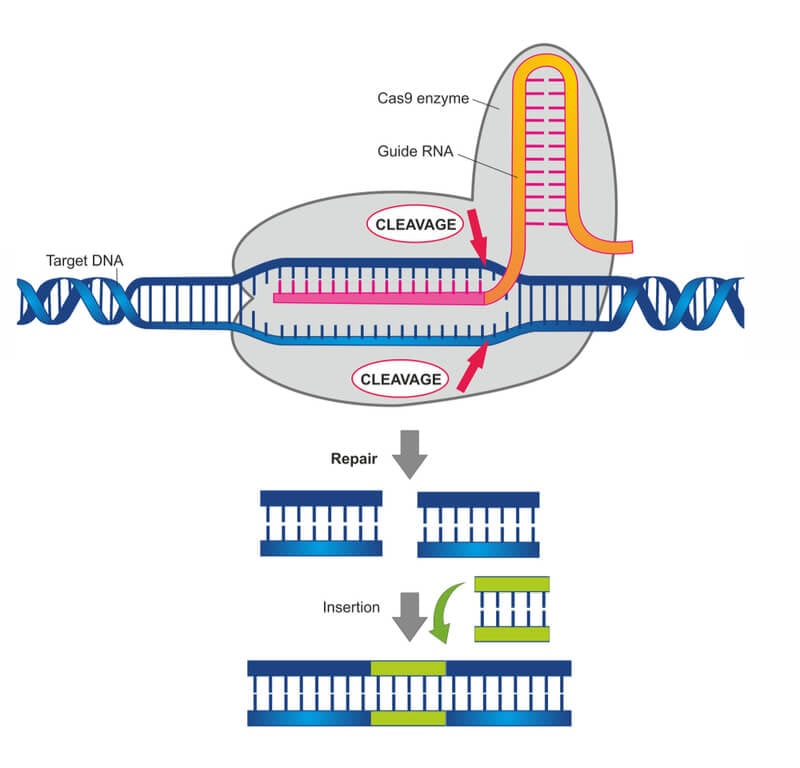
The CRISPR/Cas9 gene editing system
-
What does CRISPR stand for?
Clustered Regularly Interspaced Short Palindromic Repeats
-
How much % of bacteria is the CRISPR system found?
40%
-
Why have bacteria evolved to acquire the CRISPR system?
Provides Adaptive immunity or protection from foreign DNA or MGE that have been previously encountered
-
A general summary:
New technologies change everything. e.g. sequencing, bioinformatics, gene expression technologies; discovery of the toolbox of restriction enzymes, plasmids, CRISPR, etc.
We have learned -
How genomes are – replicated, vary, transferred, expressed, modified...How bacteria colonise, spread, cause disease, can be diagnosed, treated or prevented...How to make artificial proteins, structures, cells and in industrial quantities.How to genetically manipulate cells for study, therapeutics and industrial applications.

